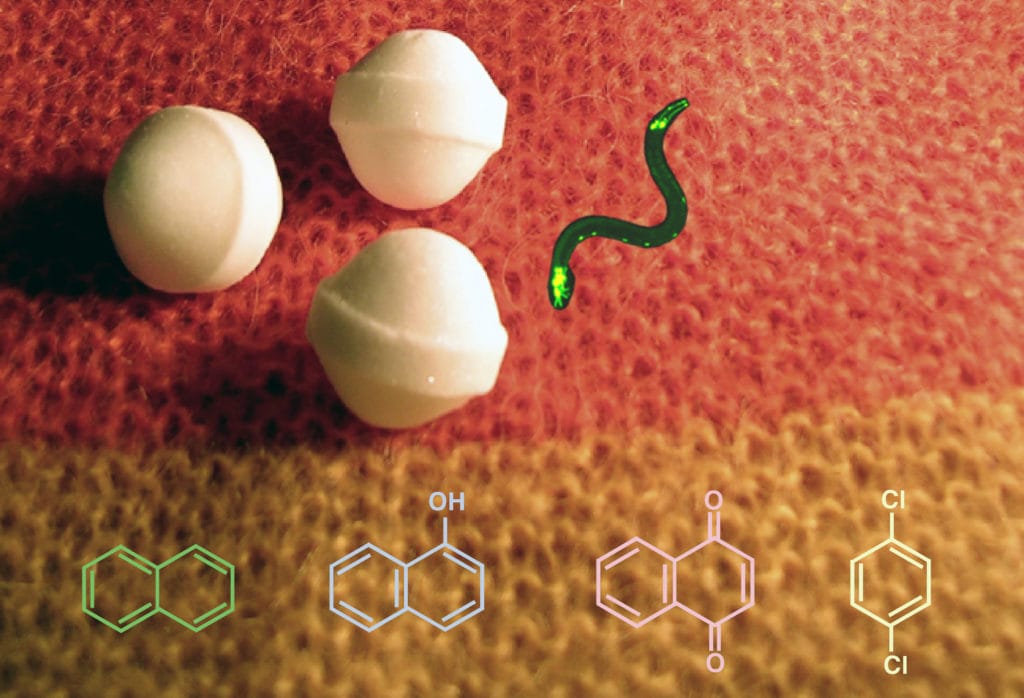It goes without saying that people do a lot of weird things in their attempts to get high. When an 18-year-old French woman entered a hospital, unsteady on her feet, “mentally sluggish” and with scaly skin on her hands and legs, doctors were unsure what was going on. Her twin sister had the same problem, albeit to a lesser degree, but there was no history of anything like this in their family. It wasn’t until they uncovered a bag of mothballs in her hospital room that it became clear what was going on. She and her sister were abusing mothballs.
Seriously, People Abuse Mothballs?
There may not have been many reports of mothball abuse, but the stories that have surfaced show that, yes, people really do abuse mothballs. Technically speaking, they’re looking for the chemical paradichlorobenzene, which is used as an insecticide and fungicide, but is mainly encountered in the form of little white balls you put in closed containers to protect your clothes from insects. Some are made from naphthalene, which can also be abused but is generally considered to be more toxic. Mothballs “sublimate”—turn directly from a solid into a gas—so users generally abuse them by placing some mothballs into a bag and huffing from it for several minutes. Other users chew or suck on mothballs to get high. It might seem like a bizarre choice of substance, but that’s precisely the reason people choose to abuse it. It’s an ordinary household item that can be abused with little suspicion. It’s estimated that since most people won’t voluntarily admit to inhaling household products to get high, the prevalence of mothball abuse is much greater than we realize.
Effects and Risks
Like many inhalants, mothballs cause lightheadedness, dizziness and lethargy when abused. Headaches, nausea, vomiting and stomach pain are also common symptoms, and inhaling the harsh chemicals irritates the airways and eyes. Users lose coordination, become mentally impaired (often apparent through slurred speech), develop weakness in their limbs and, in some cases, develop scaly patches of skin. In the long-term, there are many potential risks to mothball abuse. Weight loss is common with regular exposure, and pregnant women have been reported to develop anemia. The most potentially damaging effects are liver failure, kidney failure, convulsions and coma. There are differences between the effects of naphthalene and paradichlorobenzene, but the overall impacts are relatively similar. Paradichlorobenzene may be less toxic, but liver and kidney disease have been reported.
Addiction and Recovery
There is extremely limited information available regarding the addictiveness of mothballs, but reports of patients resorting to toilet bowl deodorizers (containing the same active ingredient) when mothballs were unavailable paint a very clear picture. In addition, in the case report, the patient had suffered from depression previously, and was eventually diagnosed as dependent on mothballs before being sent to a rehab center. Recovery is usually possible; in the majority of reported cases, it’s taken three to six months of abstinence to make a full recovery. In the case of the twins mentioned in the introduction, the more heavily-abusing sister recovered after six months, but her twin recovered in three. It’s likely that the longer one abuses mothballs, the longer it will take to get healthy.
Conclusion
Mothballs aren’t the most widespread drug in the U.S. by a long stretch, but they represent one of a whole group of household-products-turned-drugs that are especially difficult to legislate against and detect. If you suspect your teen of abusing mothballs or any other inhalant, it’s essential to address the problem and get them help.

